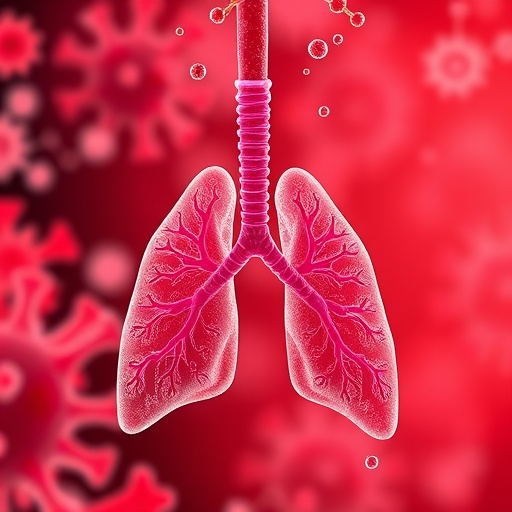Gut Microbiota Imbalance Linked to Rapid Global Rise in IBD – European Medical Journal

Global Inflammatory Bowel Disease Burden and Intestinal Microbiota Dysbiosis: A Report on Implications for Sustainable Development Goals
Executive Summary
A comprehensive global study conducted between 1990 and 2023 has identified a strong association between intestinal microbiota dysbiosis and the escalating worldwide burden of Inflammatory Bowel Disease (IBD). The findings present critical implications for achieving Sustainable Development Goal 3 (Good Health and Well-being) by pinpointing a key modifiable risk factor for a major non-communicable disease. The research underscores the necessity of integrating microbial health into public health strategies to meet global wellness targets.
Analysis of Global IBD Trends and Microbial Correlation
Data from the Global Burden of Disease database, covering 180 countries, reveals a statistically significant increase in the global footprint of IBD. The primary indicators demonstrate a consistent upward trend over the three-decade period.
- Incidence: Increased from 12.3 to 25.6 cases per 100,000 population.
- Prevalence: Rose from 396 to 523 cases per 100,000 population.
- Disability-Adjusted Life Years (DALYs): Grew from 230 to 380 per 100,000 population.
The analysis established a direct correlation between microbial imbalance and disease burden. Regions with severe gut microbiota dysbiosis experienced an IBD incidence growth rate 3.2 times higher than regions with relatively balanced microbial ecosystems, confirming that dysbiosis is a significant factor in the disease’s expansion.
Alignment with Sustainable Development Goals
The study’s conclusions directly inform strategies for achieving several key SDGs by highlighting the intersection of environmental health, nutrition, and non-communicable disease.
-
SDG 3: Good Health and Well-being
By identifying intestinal dysbiosis as a primary driver in the rise of IBD, this research directly supports Target 3.4, which aims to reduce premature mortality from non-communicable diseases. Understanding this microbial link is fundamental to developing effective preventative health strategies and promoting well-being for all.
-
SDG 10: Reduced Inequalities
The report notes that IBD is expanding in both high-income and rapidly industrialising regions, indicating a growing global health inequity. Focusing on microbial health as a predictive and preventative marker can help formulate equitable public health policies that mitigate the disease burden across diverse socio-economic landscapes.
-
SDG 2: Zero Hunger
The potential for interventions such as dietary strategies to restore microbial balance reinforces the connection between sustainable food systems, adequate nutrition, and the prevention of chronic diseases. This aligns with the goal of ensuring universal access to safe, nutritious food that supports human health.
Recommendations for Public Health Policy and Future Directions
To address the rising IBD burden in alignment with global development targets, the following actions are recommended:
- Establish Microbiome Surveillance: Implement public health surveillance systems to monitor intestinal microbiota disruption. This will enable the early identification of high-risk populations and facilitate targeted, preventative interventions before disease rates escalate.
- Promote Microbiome-Centric Interventions: Invest in and promote strategies aimed at restoring microbial balance. This includes developing evidence-based dietary guidelines, validating the use of probiotics, and advancing microbiome-directed therapeutics to reduce IBD risk on a population scale.
- Integrate Findings into Global Health Policy: Formally recognize intestinal microbiota dysbiosis as a key factor in public health policies designed to curb the global spread of non-communicable diseases and achieve the targets set forth in SDG 3.
Analysis of Sustainable Development Goals in the Article
-
Which SDGs are addressed or connected to the issues highlighted in the article?
The primary Sustainable Development Goal (SDG) addressed in the article is:
-
SDG 3: Good Health and Well-being
The article is entirely focused on a global health issue, Inflammatory Bowel Disease (IBD). It discusses the rising global burden of this disease by analyzing key health metrics such as incidence, prevalence, mortality, and disability-adjusted life years. The research explores the causes of the disease (intestinal microbiota dysbiosis) and suggests public health strategies for prevention and treatment, which are central to the mission of SDG 3.
-
-
What specific targets under those SDGs can be identified based on the article’s content?
Based on the article’s focus, the following specific targets under SDG 3 can be identified:
-
Target 3.4: By 2030, reduce by one third premature mortality from non-communicable diseases through prevention and treatment and promote mental health and well-being.
IBD is a non-communicable disease (NCD). The article directly addresses the growing burden of this NCD by highlighting its “escalating global footprint” and the increase in “incidence, prevalence, mortality, and disability-adjusted life years.” The study’s conclusion, which calls for “global strategies addressing environmental and microbial contributors to disease” and interventions like “dietary strategies, probiotics, or microbiome-directed therapeutics,” directly supports the prevention and treatment aspect of this target.
-
Target 3.d: Strengthen the capacity of all countries, in particular developing countries, for early warning, risk reduction and management of national and global health risks.
The article proposes a method for early warning and risk reduction. The researchers suggest that “surveillance of microbial disruption could help identify high-risk regions early, enabling targeted prevention efforts before disease rates escalate.” This positions gut microbiota imbalance as a predictive marker, which can be used to strengthen the capacity for managing the global health risk posed by the spread of IBD.
-
-
Are there any indicators mentioned or implied in the article that can be used to measure progress towards the identified targets?
Yes, the article explicitly mentions and implies several indicators that can be used to measure progress.
-
Indicators for Target 3.4 (Reduce NCD burden):
The article uses data from the Global Burden of Disease database, which includes several key indicators for measuring the burden of IBD:
- Incidence Rate: The article states that “IBD incidence increased from 12.3 to 25.6 cases per 100,000.” Tracking this indicator measures the rate of new cases.
- Prevalence Rate: The article notes that “prevalence rose from 396 to 523 per 100,000,” which measures the total number of people living with the disease.
- Mortality Rate: The research explicitly “tracked major indicators including… mortality,” which is a direct measure of progress in reducing premature death from NCDs.
- Disability-Adjusted Life Years (DALYs): The article specifies that “disability-adjusted life years increased from 230 to 380 per 100,000.” DALYs are a comprehensive measure of disease burden, combining years of life lost to premature death and years lived with a disability.
-
Indicators for Target 3.d (Strengthen early warning and risk reduction):
The article implies an indicator for building early warning capacity:
- Implementation of Surveillance Systems for Microbial Disruption: The article suggests that “surveillance of microbial disruption could help identify high-risk regions early.” The establishment and scope of such surveillance programs could serve as an indicator of a country’s or region’s capacity for early warning and risk reduction related to IBD.
-
Summary of Findings
| SDGs | Targets | Indicators |
|---|---|---|
| SDG 3: Good Health and Well-being | Target 3.4: Reduce by one third premature mortality from non-communicable diseases through prevention and treatment. |
|
| SDG 3: Good Health and Well-being | Target 3.d: Strengthen the capacity of all countries… for early warning, risk reduction and management of national and global health risks. |
|
Source: emjreviews.com
What is Your Reaction?
 Like
0
Like
0
 Dislike
0
Dislike
0
 Love
0
Love
0
 Funny
0
Funny
0
 Angry
0
Angry
0
 Sad
0
Sad
0
 Wow
0
Wow
0




















































.jpg.webp?itok=0ZsAnae9#)


























